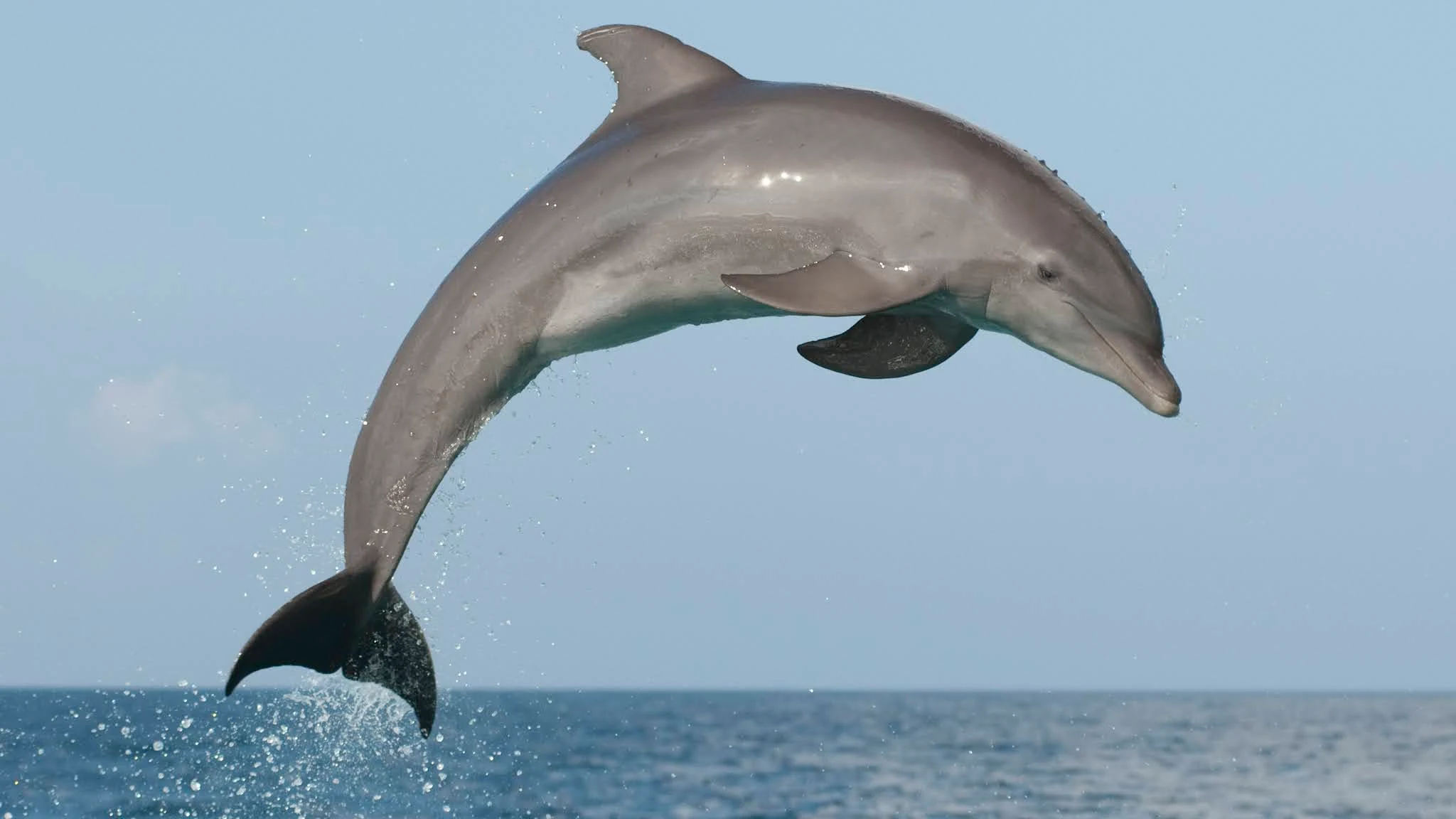Facts on Dolphins
Scientific name: Delphinus
Domain: Eukarya
Kingdom: Animalia
Phylum: Chordata
Class: Mammalia
Order: Cetacea
Suborder: Odontoceti
Family: Delphinidae
Genus: Delphinus delphis
Species: D. delphis

Introduction
Dolphins, unlike most creatures living in the sea, are mammals. They are warm-blooded and nurse their young with milk from mammary glands. Dolphins are part of a group of mammals called cetaceans which includes all whales, dolphins and porpoises. There are 40 extant species named as dolphins. They have streamlined bodies and two limbs that are modified into flippers.Though they aren't quite as flexible as seals, some dolphins can travel at speeds 29 km (18 miles) per hour for short distances. They use their conical shaped teeth to capture fast-moving prey. They have well-developed hearing which is adapted for both air and water and this hearing is so well developed that even some dolphins can survive even if they are blind. Some species of dolphins are well adapted for diving to great depths. They have a layer of fat (also called blubber) under the skin to keep them warm in the cold water.
Facts
1. Dolphins are not fish but mammals; this means that they nurse their babies.2. Bottlenose dolphins are the most common and well-known type of oceanic dolphin.
3. Dolphins can stay up to 15 minutes underwater, but they can’t breathe under the water. They need to come to the surface of the ocean to breathe air.
4. Dolphins have a blowhole on top of their head which helps them to breathe when they come to the surface of the water.
5. Dolphins use a technique called echolocation to find food and navigate.
6. The Killer Whale (also known as Orca) is actually a type of dolphin.
7. Dolphins communicate with each other by clicking and whistling.
8. Dolphins live in groups called pods or schools of up to 12 individuals.
9. Dolphins consume a variety of prey including fish, squid, and crustaceans.
10. The female dolphins are known as cows while males are called bulls and young dolphins are called calves.
11. Dolphins often display a playful attitude which makes them popular in human culture.
12. Dolphins have excellent eyesight as well as hearing. They have the ability to use echolocation for finding the exact location of objects underwater.
13. Dolphins height ranges from 4 feet (1.2 meters) up to 30 feet (9.5 meters).
14. Most of the dolphin species have a long lifespan. It is estimated that some species of dolphins might have lived for more than 100 years.
15. Dolphins live in all oceans of the Earth and even sometimes in rivers. Specifically, one of the best-known species of dolphins, the bottlenose dolphin lives in all oceans of the world doesn’t live in the Arctic and the Antarctic oceans.
16. Dolphins have streamlined bodies as well as two limbs which are modified into flippers.
17. The average speed of some dolphins is 55.5 km/h (34.5 mph).
18. Dolphins have conical shaped teeth which help them to capture fast-moving prey.
19. Some species of dolphins are well adapted for diving at great depths than other types of dolphins.
20. Dolphins also have a layer of fat (also known as blubber) under their skin helps them to keep themselves warm in the cold water of the ocean.
Fantastic and Cool Facts about Dolphin
ReplyDeleteExcellent Job
ReplyDeleteThese facts are too Interesting
ReplyDeleteGood
ReplyDelete